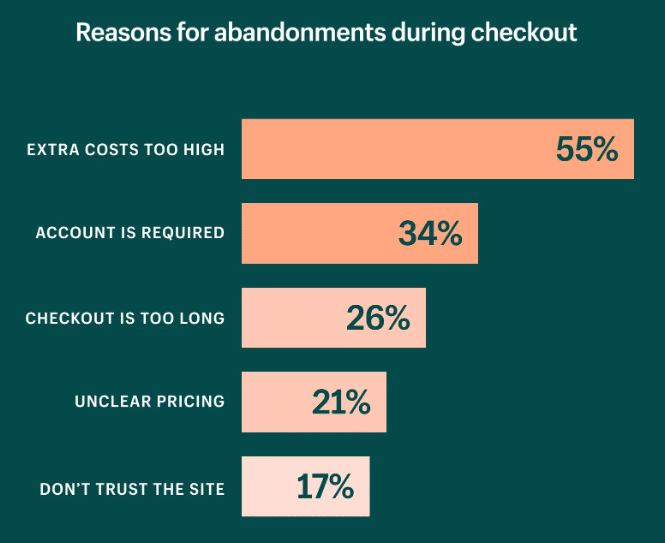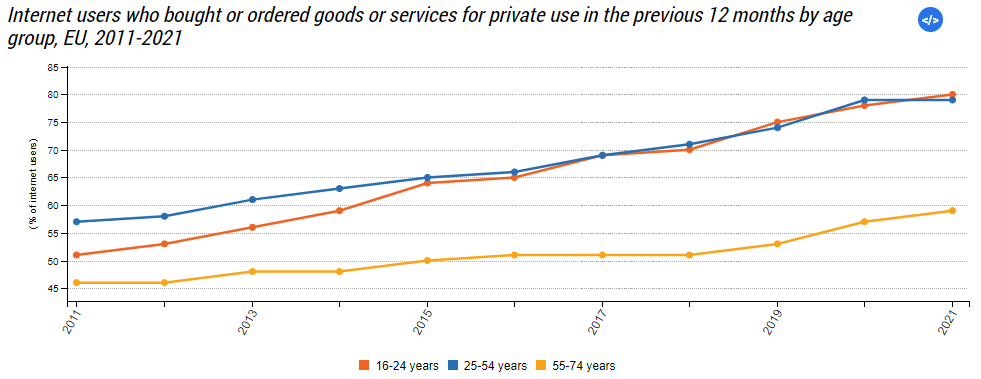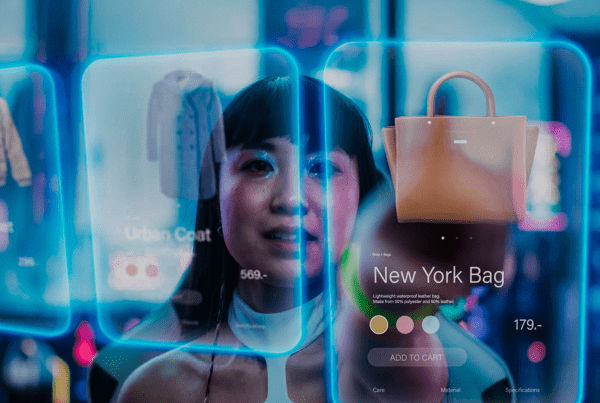
Inês Tito
– Copywriter –
The customer is the soul of any business. It is he who marks the starting point and the destiny of companies. And it is on him that all efforts should be focused.
However, reaching the customer requires more than excellence. It is necessary to know who he is, what his tastes and preferences are, and his path until he finds our brand.
The customer is the soul of any business. It is he who marks the starting point and the destiny of companies. And it is on him that all efforts should be focused.
However, reaching the customer requires more than excellence. It is necessary to know who he is, what his tastes and preferences are, and his path until he finds our brand.
The customer journey
In a perfect scenario, the customer knows what he needs and completes the purchase without any hesitation. However, the reality is quite different. The customer journey is full of back and forth that may (or may not) translate into a successful sale.
Source: Freepik
Finding the points of contact
The consumer journey is defined as the customer’s journey through the various moments of contact with the brand. In this sense, it is common for companies to map this journey to create a visual representation that allows the identification of touch points. From here, it becomes easier to determine what can be improved.
There are several consumer journey mapping models. Therefore, each brand is free to adopt the one that best suits its objectives. Some companies decide to focus on attracting new customers, excluding concepts such as customer loyalty. Others decide to analyze the entire consumer lifecycle.
Stages of the journey
Regardless of the option chosen, some points of contact are common.
-
Discovery
This is usually the customer’s first point of contact with the brand. At this stage, the consumer has a desire or need and is looking for a solution to his problem. Thus, the customer tends to search for informative content to identify the answer that best fits what he needs. For companies, one of the strategies to adopt is to list the benefits of that product or service.
-
Consideration
In this phase, the client considers the product or service of a certain brand as a viable option, comparing it with others of different brands.
Since the customer does not yet have all the information to reach a decision, this is a decisive moment for companies. Through content marketing, brands can (and should) create content in different formats that convey essential information to the target audience. The goal is to show the customer how “that” product has everything to meet their needs.
-
Decision
In the decision phase, the customer has already chosen and purchased the desired product or service. If, on the one hand, some customers research extensively until they reach this stage, others start their journey here. An example of this is the consumer who knows exactly what he wants, with no need for additional information.
-
Retention
According to some models of the customer journey, the retention phase happens after the sale. Here, brands may choose to approach the consumer about new opportunities to upgrade the product or service or encourage them to participate in loyalty programs. In this phase, it is important to maintain communication with the customer to promote their commitment to the brand.
-
Advocate
The last stage of the journey is related to a positive customer experience. This means that not all customers get here. It is a phase reserved only for satisfied customers who promote the brand and its products or services to potential consumers.
So in addition to building brand loyalty, these satisfied customers use traditional word-of-mouth advertising to drive new customers to start their consumer journey and discover the brand.
Why map the customer journey?
Besides allowing you to optimize your entire marketing and sales strategy, mapping the customer journey will influence the customer experience and employee well-being.
-
Knowing the other side
Brands spend much of their time developing products and services to meet market needs. But do they know the reality from the customer’s point of view?
When brands step away from the business perspective to get to know the shopper experience, they have the opportunity to observe the reasons behind consumer behavior. Thus, the information obtained will feed the business strategy from the customer’s perspective.
-
Discovering Unidentified Needs
Customer needs to go beyond the characteristics of the product or service. In many cases, the purchase is not related to the product itself, but to the procurement process.
According to the Baymard Institute, more than half of respondents give up buying online due to shipping costs and customs fees that are too high. Others identify too many steps before reaching the payment stage.

Source: Baymard Institute
These are just a few examples that demonstrate the importance of knowing the customer’s perspective. Identifying these gaps allows you to create strategies to streamline the acquisition process, which leads to increased revenue and customer satisfaction.
-
Achieve a comprehensive view
By visually presenting the customer journey, executives and employees alike have access to a broad perspective of the various points of customer contact with the brand. In addition, it becomes possible to predict customer behavior, eliminate redundant steps, or add more relevant ones.
-
Improve Employee Engagement
When we talk about the customer journey, we rarely associate it with employee engagement. This term, widely used in human resources, encompasses the triad of well-being at work: satisfaction, motivation, and commitment.
There are several strategies to promote engagement. One of them is to show the employee the impact of their work on the company’s success and customers’ lives. Thus, by knowing the customer journey, brands are one step closer to optimizing their sales strategy and, at the same time, improving employees’ perception of their work.
The result? Employees with high levels of engagement are more productive than their peers and generate more satisfied customers.
-
Creating personalized experiences
Recent studies indicate that personalizing the customer experience is the key to high levels of satisfaction, loyalty, and return on investment. However, for this to happen, it is necessary to know the uniqueness of each customer. Through this strategy, brands can personalize each stage of the journey, presenting themselves as more than the image of a company, a product, or a service
The importance of the persona
The constant evolution of society leads to a change of paradigms that marketing tries to keep up with. If originally, companies were focused on the production and sale of products and services, today the priority is customer satisfaction.
In the last century, after two world wars, there was a period of economic and political stability that promoted great technological advances. After several decades, life finally became easier. Since then, the world population has grown and society has not stopped evolving.
Today, six generations live side by side, each with distinct beliefs, motivations, and aspirations. These characteristics are visible in their behavior, especially as consumers. While Babyboomers opt for physical stores and human contact, Millennials and Generation Z prefer personalized digital commerce.
Personalizing the customer experience: trend or fact?
The explosion of e-commerce has dramatically changed consumer behavior.
According to Eurostat, almost 80% of internet users between the ages of 16 and 54 say they buy online. Among the various reasons for this result is the desire to achieve a seamless shopping experience that is tailored to their preferences and can be shared with others in the digital environment.

Source: Eurostat
In addition, a Google study reports that consumers surveyed tend to spend more than they planned when the shopping experience is personalized. For this reason, more and more brands are investing in personalizing the shopping experience, at all stages of the customer journey and across multiple communication channels.
In the online world, consumers have access to multiple, sometimes contradictory, sources of information. This fact leads them to put their trust in the opinion of other customers, and not in what brands say. Therefore, nowadays, buying is more than acquiring a good or service. It is a social activity in which the customer himself becomes a seller.
In this sense, brands that bet on personalizing the experience feed their marketing strategy through the customer’s vision. In addition to easily meeting the needs of consumers, they make them feel more valued. After all, products and services are created based on their opinions.
Buyer persona vs. target audience
Investing in the personalization of the buying experience requires brands to adopt new strategies. Thus, identifying and characterizing the target audience alone becomes an obsolete task.

Source: Freepik
A buyer persona is a semi-fictitious character that is intended to represent the ideal customer. Why semi-fictitious? Its creation is based on information collected through market research and customer satisfaction surveys.
Thus, the profile of a buyer persona is highly detailed, revealing personality traits, age, gender, education level, hobbies, ambitions, and future desires.
On the other hand, the target audience is a generic concept, in which brands identify characteristics common to a group of consumers. Among the most frequent are salaried range or age groups. Still, identifying the target audience is the starting point for any marketing strategy.
However, when brands resort only to the target audience to determine consumer needs, they risk obtaining incomplete information that may not correspond to reality.
Therefore, the concepts of buyer persona and target audience are not mutually exclusive. They should be used together to develop a thorough profile of the ideal customer.
Is it worth creating a buyer persona?
Of course, it does! Due to its impact on the marketing strategy, the benefits of developing a buyer persona extend to the entire company.
The buyer persona allows the organization to deepen its knowledge about the customer and to establish an empathetic customer-brand relationship. In addition, it promotes communication with the customer, improves target audience segmentation, and leads to increased return on investment.
In short, through the buyer persona, brands can achieve a more persuasive and responsive approach to consumers’ wants and needs.
The future of the customer journey
Brands want to anticipate consumers’ needs and present them with what they need before they know it. While no organization can predict the future, today’s evolving technology makes that goal ever closer.
Combining customer journey mapping and persona creation with the latest technology allows brands to develop a more human customer experience, even in a digital context.
In recent years, we have seen greater contact in society with digital media. However, as antagonistic as it may seem to us, the desire for human contact has never been so intense. If, on the one hand, we long for distance, on the other, we want to be heard and recognized.
For brands, the great challenge will be to find the perfect balance between making each customer feel unique and, at the same time, taking care of his or her privacy. That said, are brands using the latest technology to rescue the closeness of the pre-digital world from the past?








